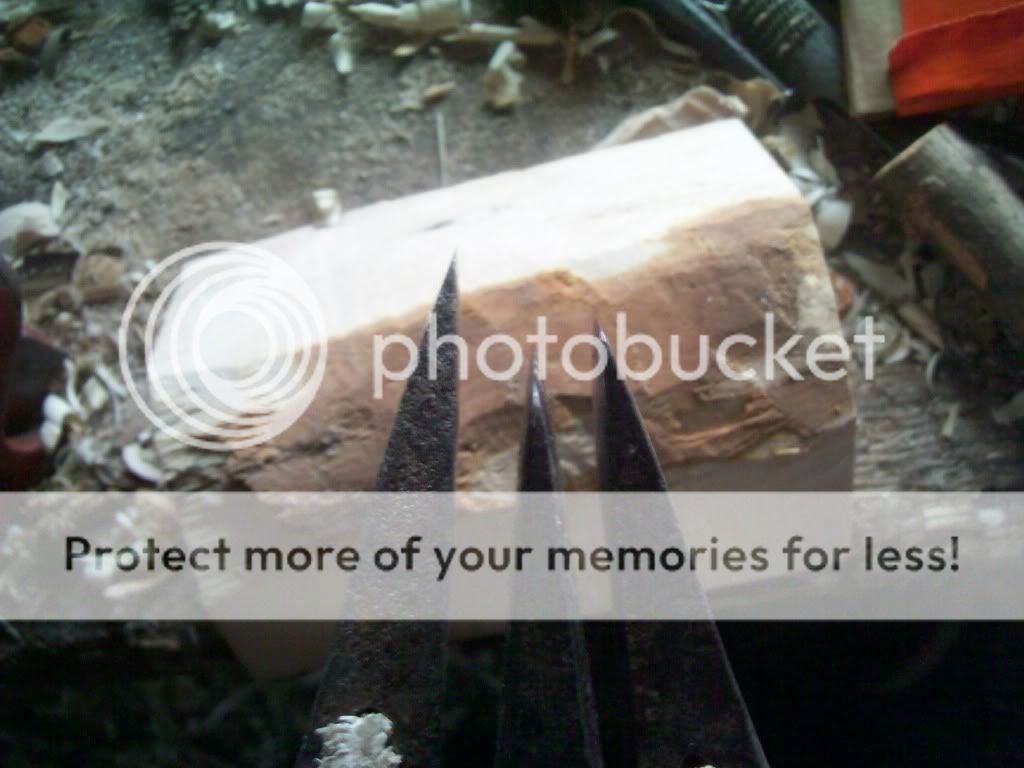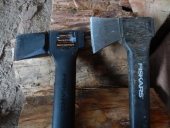




find religion! church
kiva! hyvä! iloinen! pikkumaatila
get stung! beehives
be hospitable! host-a-hive
be antisocial! facespace








"You must be the change you want to see in the world." "First they ignore you, then they laugh at you, then they fight you, then you win." --Mahatma Gandhi
"Preach the Gospel always, and if necessary, use words." --Francis of Assisi.
"Family farms work when the whole family works the farm." -- Adam Klaus





R Scott wrote:We have the GB Maul (next size larger). It is faster than hydraulic splitters and way better sounding.
find religion! church
kiva! hyvä! iloinen! pikkumaatila
get stung! beehives
be hospitable! host-a-hive
be antisocial! facespace




tel jetson wrote:
R Scott wrote:We have the GB Maul (next size larger). It is faster than hydraulic splitters and way better sounding.
the maul has a hammer poll, yes? so you can pound in a wedge with it?
"You must be the change you want to see in the world." "First they ignore you, then they laugh at you, then they fight you, then you win." --Mahatma Gandhi
"Preach the Gospel always, and if necessary, use words." --Francis of Assisi.
"Family farms work when the whole family works the farm." -- Adam Klaus





David Mcgowan Hicks wrote:I have an estwing brand camp axe that I love. Its small enough to not wear me out, not too unwieldy to choke up on for splitting kindling, but big enough to fell any tree I wouldn't get the chainsaw out for. Haven't used it for serious splitting, but that's not what I bought it for.
find religion! church
kiva! hyvä! iloinen! pikkumaatila
get stung! beehives
be hospitable! host-a-hive
be antisocial! facespace
 1
1












Kevin P Anderson wrote:I got a Fiskars splitting axe a few years ago - looks about the same design as the GB and it was $40 usual but I got it on sale at a box store for $30.
It is light and works great. Not like the (ugh) 40 pound triangular maul the wife bought me that tends to bounce more than split. It collects more dust than wood chips.
I love my Fiskars...happy with the design and the price.
"You must be the change you want to see in the world." "First they ignore you, then they laugh at you, then they fight you, then you win." --Mahatma Gandhi
"Preach the Gospel always, and if necessary, use words." --Francis of Assisi.
"Family farms work when the whole family works the farm." -- Adam Klaus























Eric Callahan wrote:
I prefer Maine or Northeastern manufactured axes (Snow & Nealley, Emerson Stevens, Rixford, Walters, etc). the ones below fit that criteria, hung on sugar maple handles.
find religion! church
kiva! hyvä! iloinen! pikkumaatila
get stung! beehives
be hospitable! host-a-hive
be antisocial! facespace
 1
1




tel jetson wrote:
Eric Callahan wrote:
I prefer Maine or Northeastern manufactured axes (Snow & Nealley, Emerson Stevens, Rixford, Walters, etc). the ones below fit that criteria, hung on sugar maple handles.
I'm glad to learn those names. I really enjoy the GB axe I have, but I'm always looking for quality from closer to home.
on the handle material: do you use sugar maple because it makes the best handles, or because it's available to you? no sugar maple around here, but I'm growing some ash in the woodlot.




Eric Callahan wrote:Yes, a good axe is probably the most important tool for sustaining life, in context with itself and a person who knows how to use it.
I prefer Maine or Northeastern manufactured axes (Snow & Nealley, Emerson Stevens, Rixford, Walters, etc). the ones below fit that criteria, hung on sugar maple handles.
Lawrence London lfljvenaura@gmail.com
Venaura Farm http://venaurafarm.blogspot.com
Avant Geared http://www.avantgeared.com
Permaculture Mailing List http://lists.ibiblio.org/mailman/listinfo/permaculture




Lawrence London wrote:
Eric Callahan wrote:Yes, a good axe is probably the most important tool for sustaining life, in context with itself and a person who knows how to use it.
I prefer Maine or Northeastern manufactured axes (Snow & Nealley, Emerson Stevens, Rixford, Walters, etc). the ones below fit that criteria, hung on sugar maple handles.
Also Kelly axes, particularly the Kelly Perfect, a felling axe. I have one. It is recommended for hand hewing logs for building a log cabin alongside a broadaxe and a foot adze.
I'll post pix of my axe collection in another post here soon.









Eric Callahan wrote:
Both. Sugar Maple is a great material, and has made itself available a lot the past couple of years. Ash is great, Hickory is great too. If all you can get is Birch, that will work (especially for smaller axes). Oak (white and red), Black Locust, Osage, Hornbeam, Yellow Birch all reportedly make good handles as well. Learn to make use of what is available to you.
find religion! church
kiva! hyvä! iloinen! pikkumaatila
get stung! beehives
be hospitable! host-a-hive
be antisocial! facespace




 1
1




tel jetson wrote:anybody have any resources to recommend for making handles?































|
Do the next thing next. That's a pretty good rule. Read the tiny ad, that's a pretty good rule, too.
The new gardening playing cards kickstarter is now live!
https://www.kickstarter.com/projects/paulwheaton/garden-cards
|







